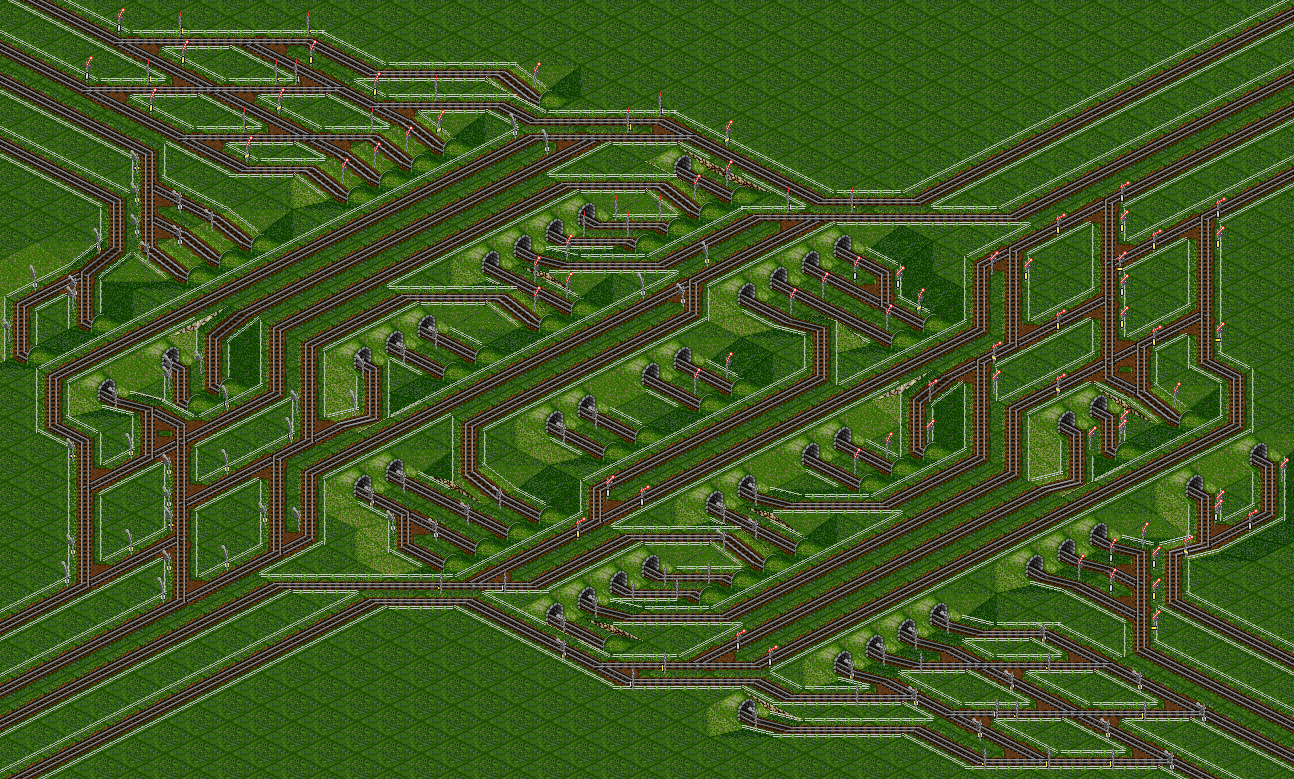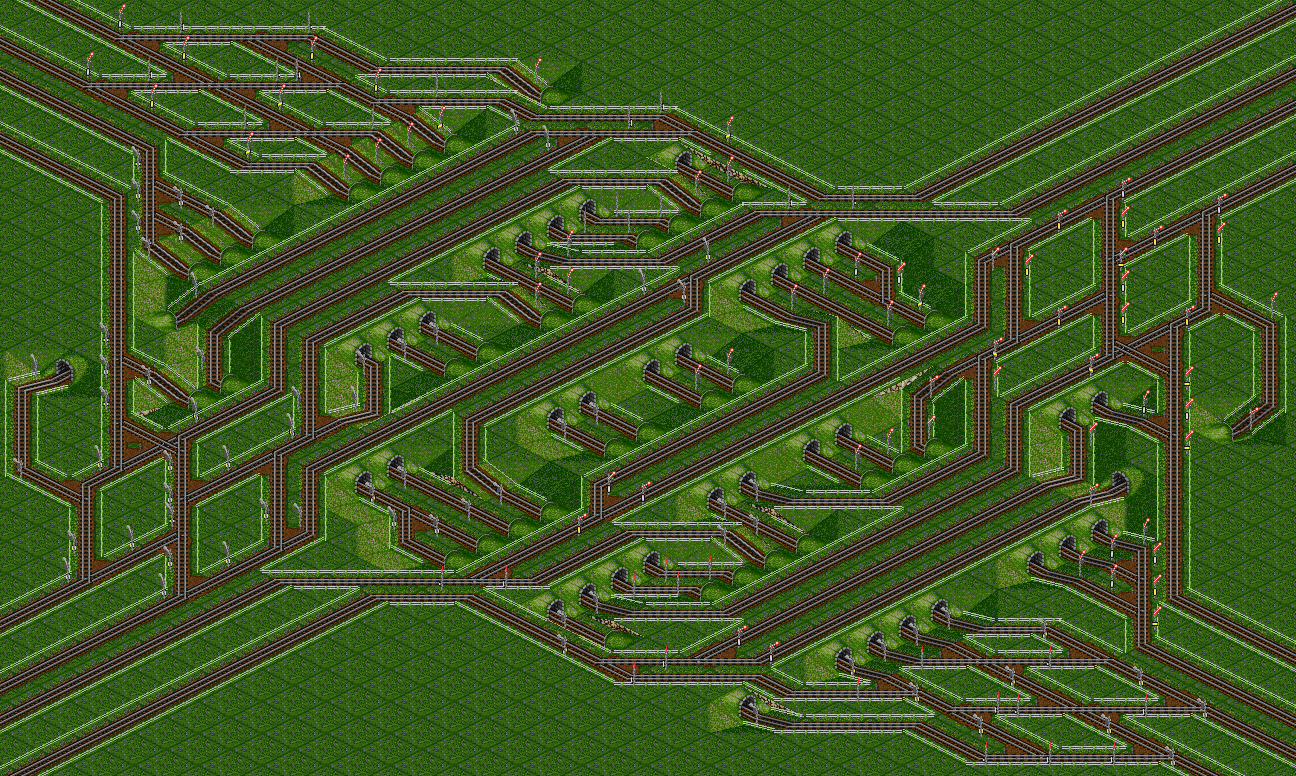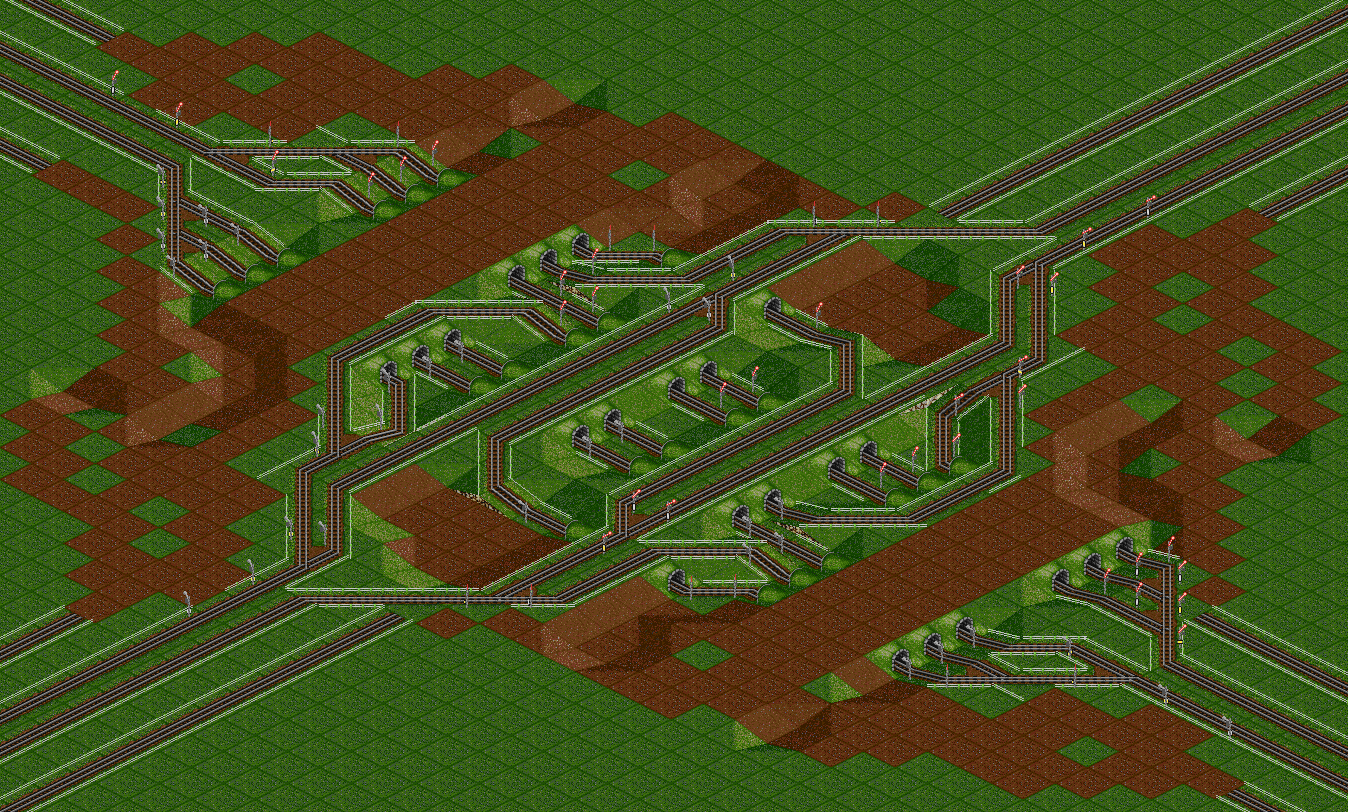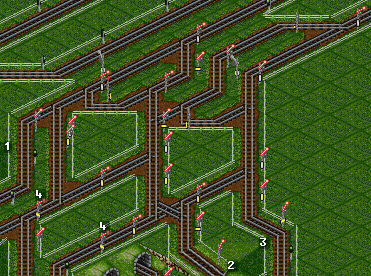-
Basic 3-Way
-
Line Merge
-
Half Cloverleaf
-
Half Spaghetti
-
Compact 3-Way
-
Compact 3-Way B-M Junction
-
Ultimate 3-way
-
Half Transmogrified
-
Braided Junction
-
Basic 4-Way
-
Roundabout
-
Cloverleaf
-
Spaghetti
-
Star
-
Complex Star
-
Branch-Merge
-
Tetrathorp
-
High Speed 4-Way Fly-over∕under
-
Pre-Signaled Roundabout
-
Advanced Roundabout
-
Right-of-way Roundabout
-
Improved Roundabout
-
Transmogrified
-
Tightlong
-
Deepblue2k8 4-way Junction
-
Multi-way/multi-track cloverleaves
-
Dual Tetrathorp
-
Dual Transmogrified
-
Dual Branch-Merge
-
Quad Branch-Merge
-
Quad Tetrathorp
-
6-tuple Branch-Merge
-
8-Way Star
-
High Speed 4-way
Track Layouts Unuseful junctions
The Dual Tetrathorp Junction is a Tetrathorp-Junction for double mainlines. It is ideally suited for mainlines at different height levels (in the following referred to as "Diff-Lev-Mains"). It consists of a inner Tetrathorp Junction connecting the inner lanes and a outer Tetrathorp connecting the outer lanes. The 4 lanes which are turning to the same direction merge each other first and have a build-in load balancer before they merge the main line. This allows trains to go from inner lanes to outer lanes and vice versa, so that they can pick the new mainline with less traffic.
| Junction Criteria | |||||||||||||||||||||||||||
|---|---|---|---|---|---|---|---|---|---|---|---|---|---|---|---|---|---|---|---|---|---|---|---|---|---|---|---|
|
| ||||||||||||||||||||||||||
| |||||||||||||||||||||||||||
Tips
- Start building the inner single Tetrathorp (check if it works) then expand the junction outward.
- The outer lanes for turning right can easily be made longer, so that they can hold your longest train.
Variations
This Dual Tetrathorp junction is optimized to be slightly more compact in flat terrain.
This is the inner single Terathorp (which is the same for the original junction and the flat variation). The outer landscaping is for the flat variation.
The load balancers of the above variations can be improved like this. The zigzagging exits at the end imply a pathfinding penalty for trains, which otherwise could decide to cross the whole load balancer even if their neighboring mainline is free. Additionally the outer right-turning-lane (2) and the mainlines (1 and 3) have direct access or a shorter accelerating distance to the merging block than the other turning lanes (4). So trains waiting on these lanes (which are more probable to blocking other trains) get priority. (Priority is not to be confused with right-of-way, which is applied at the end of the load balancer).
Furthermore it is possible to make all curves longer to allow for higher speeds and to build some or all tunnels as dual tunnels to improve the throughput. The load balancers can probably also be improved further.
Technical Data
- 40 free squares inside the junction
- 38 tunnels
Cost of the flat variation:
- Landscaping: £59,592
- Inner Tetrathorp: £134,138
- Outer Tetrathorp: £132,462
- Total: £326,984











